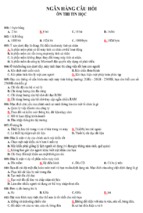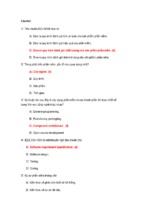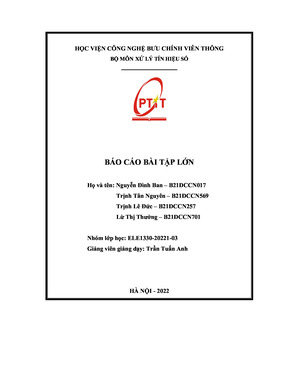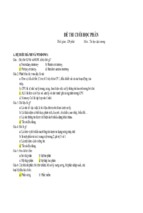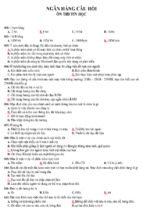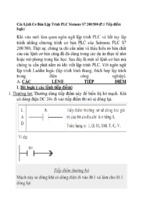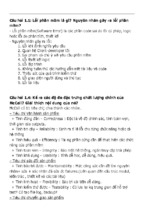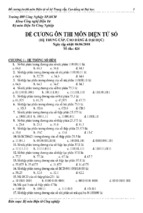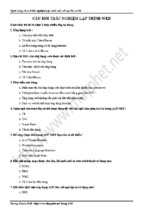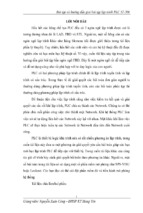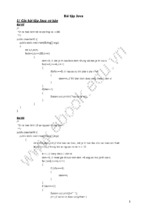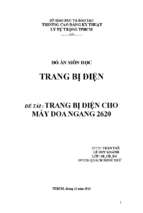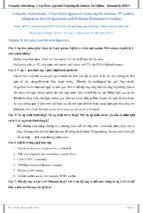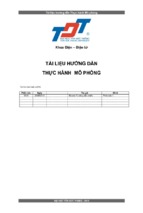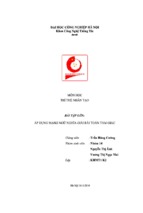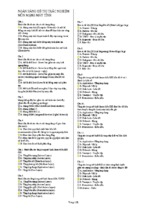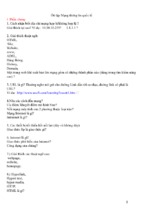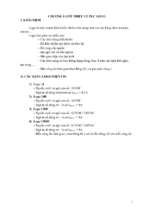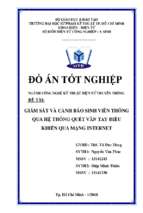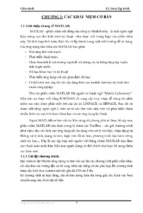Neural Network Toolbox
For Use with MATLAB
®
Howard Demuth
Mark Beale
Computation
Visualization
Programming
User’s Guide
Version 4
How to Contact The MathWorks:
www.mathworks.com
comp.soft-sys.matlab
Web
Newsgroup
[email protected]
Technical support
Product enhancement suggestions
Bug reports
Documentation error reports
Order status, license renewals, passcodes
Sales, pricing, and general information
508-647-7000
Phone
508-647-7001
Fax
The MathWorks, Inc.
3 Apple Hill Drive
Natick, MA 01760-2098
Mail
[email protected]
[email protected]
[email protected]
[email protected]
[email protected]
For contact information about worldwide offices, see the MathWorks Web site.
Neural Network Toolbox User’s Guide
COPYRIGHT 1992 - 2002 by The MathWorks, Inc.
The software described in this document is furnished under a license agreement. The software may be used
or copied only under the terms of the license agreement. No part of this manual may be photocopied or reproduced in any form without prior written consent from The MathWorks, Inc.
FEDERAL ACQUISITION: This provision applies to all acquisitions of the Program and Documentation by
or for the federal government of the United States. By accepting delivery of the Program, the government
hereby agrees that this software qualifies as "commercial" computer software within the meaning of FAR
Part 12.212, DFARS Part 227.7202-1, DFARS Part 227.7202-3, DFARS Part 252.227-7013, and DFARS Part
252.227-7014. The terms and conditions of The MathWorks, Inc. Software License Agreement shall pertain
to the government’s use and disclosure of the Program and Documentation, and shall supersede any
conflicting contractual terms or conditions. If this license fails to meet the government’s minimum needs or
is inconsistent in any respect with federal procurement law, the government agrees to return the Program
and Documentation, unused, to MathWorks.
MATLAB, Simulink, Stateflow, Handle Graphics, and Real-Time Workshop are registered trademarks, and
TargetBox is a trademark of The MathWorks, Inc.
Other product or brand names are trademarks or registered trademarks of their respective holders.
Printing History: June 1992
April 1993
January 1997
July 1997
January 1998
September 2000
June 2001
July 2002
First printing
Second printing
Third printing
Fourth printing
Fifth printing
Sixth printing
Seventh printing
Online only
Revised for Version 3 (Release 11)
Revised for Version 4 (Release 12)
Minor revisions (Release 12.1)
Minor revisions (Release 13)
Contents
Preface
Neural Networks . . . . . . . . . . . . . . . . . . . . . . . . . . . . . . . . . . . . xviii
Basic Chapters . . . . . . . . . . . . . . . . . . . . . . . . . . . . . . . . . . . . . . . . xx
Mathematical Notation for Equations and Figures . . . . . . . xxi
Basic Concepts . . . . . . . . . . . . . . . . . . . . . . . . . . . . . . . . . . . . . . . xxi
Language . . . . . . . . . . . . . . . . . . . . . . . . . . . . . . . . . . . . . . . . . . . xxi
Weight Matrices . . . . . . . . . . . . . . . . . . . . . . . . . . . . . . . . . . . . . xxi
Layer Notation . . . . . . . . . . . . . . . . . . . . . . . . . . . . . . . . . . . . . . . xxi
Figure and Equation Examples . . . . . . . . . . . . . . . . . . . . . . . . xxii
Mathematics and Code Equivalents . . . . . . . . . . . . . . . . . . . xxiii
Neural Network Design Book . . . . . . . . . . . . . . . . . . . . . . . . . xxiv
Acknowledgments . . . . . . . . . . . . . . . . . . . . . . . . . . . . . . . . . . . . xxv
Introduction
1
Getting Started . . . . . . . . . . . . . . . . . . . . . . . . . . . . . . . . . . . . . . . 1-2
Basic Chapters . . . . . . . . . . . . . . . . . . . . . . . . . . . . . . . . . . . . . . . 1-2
Help and Installation . . . . . . . . . . . . . . . . . . . . . . . . . . . . . . . . . 1-2
What’s New in Version 4.0 . . . . . . . . . . . . . . . . . . . . . . . . . . . . .
Control System Applications . . . . . . . . . . . . . . . . . . . . . . . . . . .
Graphical User Interface . . . . . . . . . . . . . . . . . . . . . . . . . . . . . .
New Training Functions . . . . . . . . . . . . . . . . . . . . . . . . . . . . . . .
Design of General Linear Networks . . . . . . . . . . . . . . . . . . . . . .
Improved Early Stopping . . . . . . . . . . . . . . . . . . . . . . . . . . . . . .
1-3
1-3
1-3
1-3
1-4
1-4
iii
Generalization and Speed Benchmarks . . . . . . . . . . . . . . . . . . . 1-4
Demonstration of a Sample Training Session . . . . . . . . . . . . . . 1-4
Neural Network Applications . . . . . . . . . . . . . . . . . . . . . . . . . .
Applications in this Toolbox . . . . . . . . . . . . . . . . . . . . . . . . . . . .
Business Applications . . . . . . . . . . . . . . . . . . . . . . . . . . . . . . . . .
Aerospace . . . . . . . . . . . . . . . . . . . . . . . . . . . . . . . . . . . . . . . . . . .
Automotive . . . . . . . . . . . . . . . . . . . . . . . . . . . . . . . . . . . . . . . . . .
Banking . . . . . . . . . . . . . . . . . . . . . . . . . . . . . . . . . . . . . . . . . . . .
Credit Card Activity Checking . . . . . . . . . . . . . . . . . . . . . . . . . .
Defense . . . . . . . . . . . . . . . . . . . . . . . . . . . . . . . . . . . . . . . . . . . . .
Electronics . . . . . . . . . . . . . . . . . . . . . . . . . . . . . . . . . . . . . . . . . .
Entertainment . . . . . . . . . . . . . . . . . . . . . . . . . . . . . . . . . . . . . . .
Financial . . . . . . . . . . . . . . . . . . . . . . . . . . . . . . . . . . . . . . . . . . . .
Industrial . . . . . . . . . . . . . . . . . . . . . . . . . . . . . . . . . . . . . . . . . . .
Insurance . . . . . . . . . . . . . . . . . . . . . . . . . . . . . . . . . . . . . . . . . . .
Manufacturing . . . . . . . . . . . . . . . . . . . . . . . . . . . . . . . . . . . . . . .
Medical . . . . . . . . . . . . . . . . . . . . . . . . . . . . . . . . . . . . . . . . . . . . .
Oil and Gas . . . . . . . . . . . . . . . . . . . . . . . . . . . . . . . . . . . . . . . . . .
Robotics . . . . . . . . . . . . . . . . . . . . . . . . . . . . . . . . . . . . . . . . . . . . .
Speech . . . . . . . . . . . . . . . . . . . . . . . . . . . . . . . . . . . . . . . . . . . . . .
Securities . . . . . . . . . . . . . . . . . . . . . . . . . . . . . . . . . . . . . . . . . . .
Telecommunications . . . . . . . . . . . . . . . . . . . . . . . . . . . . . . . . . .
Transportation . . . . . . . . . . . . . . . . . . . . . . . . . . . . . . . . . . . . . . .
Summary . . . . . . . . . . . . . . . . . . . . . . . . . . . . . . . . . . . . . . . . . . .
1-5
1-5
1-5
1-5
1-5
1-5
1-5
1-6
1-6
1-6
1-6
1-6
1-6
1-6
1-7
1-7
1-7
1-7
1-7
1-7
1-7
1-7
Neuron Model and Network Architectures
2
Neuron Model . . . . . . . . . . . . . . . . . . . . . . . . . . . . . . . . . . . . . . . .
Simple Neuron . . . . . . . . . . . . . . . . . . . . . . . . . . . . . . . . . . . . . . .
Transfer Functions . . . . . . . . . . . . . . . . . . . . . . . . . . . . . . . . . . . .
Neuron with Vector Input . . . . . . . . . . . . . . . . . . . . . . . . . . . . . .
2-2
2-2
2-3
2-5
Network Architectures . . . . . . . . . . . . . . . . . . . . . . . . . . . . . . . . 2-8
A Layer of Neurons . . . . . . . . . . . . . . . . . . . . . . . . . . . . . . . . . . . 2-8
Multiple Layers of Neurons . . . . . . . . . . . . . . . . . . . . . . . . . . . . 2-11
iv
Contents
Data Structures . . . . . . . . . . . . . . . . . . . . . . . . . . . . . . . . . . . . . .
Simulation With Concurrent Inputs in a Static Network . . . .
Simulation With Sequential Inputs in a Dynamic Network . .
Simulation With Concurrent Inputs in a Dynamic Network .
2-13
2-13
2-14
2-16
Training Styles . . . . . . . . . . . . . . . . . . . . . . . . . . . . . . . . . . . . . . 2-18
Incremental Training (of Adaptive and Other Networks) . . . . 2-18
Batch Training . . . . . . . . . . . . . . . . . . . . . . . . . . . . . . . . . . . . . . 2-20
Summary . . . . . . . . . . . . . . . . . . . . . . . . . . . . . . . . . . . . . . . . . . . . 2-24
Figures and Equations . . . . . . . . . . . . . . . . . . . . . . . . . . . . . . . . 2-25
Perceptrons
3
Introduction . . . . . . . . . . . . . . . . . . . . . . . . . . . . . . . . . . . . . . . . . . 3-2
Important Perceptron Functions . . . . . . . . . . . . . . . . . . . . . . . . . 3-3
Neuron Model . . . . . . . . . . . . . . . . . . . . . . . . . . . . . . . . . . . . . . . . 3-4
Perceptron Architecture . . . . . . . . . . . . . . . . . . . . . . . . . . . . . . . 3-6
Creating a Perceptron (newp) . . . . . . . . . . . . . . . . . . . . . . . . . . 3-7
Simulation (sim) . . . . . . . . . . . . . . . . . . . . . . . . . . . . . . . . . . . . . . 3-8
Initialization (init) . . . . . . . . . . . . . . . . . . . . . . . . . . . . . . . . . . . . 3-9
Learning Rules . . . . . . . . . . . . . . . . . . . . . . . . . . . . . . . . . . . . . . 3-12
Perceptron Learning Rule (learnp) . . . . . . . . . . . . . . . . . . . . 3-13
Training (train) . . . . . . . . . . . . . . . . . . . . . . . . . . . . . . . . . . . . . . 3-16
Limitations and Cautions . . . . . . . . . . . . . . . . . . . . . . . . . . . . . 3-21
Outliers and the Normalized Perceptron Rule . . . . . . . . . . . . . 3-21
v
Graphical User Interface . . . . . . . . . . . . . . . . . . . . . . . . . . . . .
Introduction to the GUI . . . . . . . . . . . . . . . . . . . . . . . . . . . . . . .
Create a Perceptron Network (nntool) . . . . . . . . . . . . . . . . . . .
Train the Perceptron . . . . . . . . . . . . . . . . . . . . . . . . . . . . . . . . .
Export Perceptron Results to Workspace . . . . . . . . . . . . . . . . .
Clear Network/Data Window . . . . . . . . . . . . . . . . . . . . . . . . . .
Importing from the Command Line . . . . . . . . . . . . . . . . . . . . .
Save a Variable to a File and Load It Later . . . . . . . . . . . . . . .
3-23
3-23
3-23
3-27
3-29
3-30
3-30
3-31
Summary . . . . . . . . . . . . . . . . . . . . . . . . . . . . . . . . . . . . . . . . . . . . 3-33
Figures and Equations . . . . . . . . . . . . . . . . . . . . . . . . . . . . . . . . 3-33
New Functions . . . . . . . . . . . . . . . . . . . . . . . . . . . . . . . . . . . . . . 3-36
Linear Filters
4
Introduction . . . . . . . . . . . . . . . . . . . . . . . . . . . . . . . . . . . . . . . . . . 4-2
Neuron Model . . . . . . . . . . . . . . . . . . . . . . . . . . . . . . . . . . . . . . . . 4-3
Network Architecture . . . . . . . . . . . . . . . . . . . . . . . . . . . . . . . . . 4-4
Creating a Linear Neuron (newlin) . . . . . . . . . . . . . . . . . . . . . . . 4-4
Mean Square Error . . . . . . . . . . . . . . . . . . . . . . . . . . . . . . . . . . . . 4-8
Linear System Design (newlind) . . . . . . . . . . . . . . . . . . . . . . . . 4-9
Linear Networks with Delays . . . . . . . . . . . . . . . . . . . . . . . . . 4-10
Tapped Delay Line . . . . . . . . . . . . . . . . . . . . . . . . . . . . . . . . . . . 4-10
Linear Filter . . . . . . . . . . . . . . . . . . . . . . . . . . . . . . . . . . . . . . . . 4-10
LMS Algorithm (learnwh) . . . . . . . . . . . . . . . . . . . . . . . . . . . . . 4-13
Linear Classification (train) . . . . . . . . . . . . . . . . . . . . . . . . . . 4-15
vi
Contents
Limitations and Cautions . . . . . . . . . . . . . . . . . . . . . . . . . . . . .
Overdetermined Systems . . . . . . . . . . . . . . . . . . . . . . . . . . . . . .
Underdetermined Systems . . . . . . . . . . . . . . . . . . . . . . . . . . . .
Linearly Dependent Vectors . . . . . . . . . . . . . . . . . . . . . . . . . . .
Too Large a Learning Rate . . . . . . . . . . . . . . . . . . . . . . . . . . . .
4-18
4-18
4-18
4-18
4-19
Summary . . . . . . . . . . . . . . . . . . . . . . . . . . . . . . . . . . . . . . . . . . . . 4-20
Figures and Equations . . . . . . . . . . . . . . . . . . . . . . . . . . . . . . . . 4-21
New Functions . . . . . . . . . . . . . . . . . . . . . . . . . . . . . . . . . . . . . . 4-25
Backpropagation
5
Overview . . . . . . . . . . . . . . . . . . . . . . . . . . . . . . . . . . . . . . . . . . . . . 5-2
Fundamentals . . . . . . . . . . . . . . . . . . . . . . . . . . . . . . . . . . . . . . . .
Architecture . . . . . . . . . . . . . . . . . . . . . . . . . . . . . . . . . . . . . . . . .
Simulation (sim) . . . . . . . . . . . . . . . . . . . . . . . . . . . . . . . . . . . . . .
Training . . . . . . . . . . . . . . . . . . . . . . . . . . . . . . . . . . . . . . . . . . . .
5-4
5-4
5-8
5-8
Faster Training . . . . . . . . . . . . . . . . . . . . . . . . . . . . . . . . . . . . . .
Variable Learning Rate (traingda, traingdx) . . . . . . . . . . . . . .
Resilient Backpropagation (trainrp) . . . . . . . . . . . . . . . . . . . . .
Conjugate Gradient Algorithms . . . . . . . . . . . . . . . . . . . . . . . .
Line Search Routines . . . . . . . . . . . . . . . . . . . . . . . . . . . . . . . . .
Quasi-Newton Algorithms . . . . . . . . . . . . . . . . . . . . . . . . . . . . .
Levenberg-Marquardt (trainlm) . . . . . . . . . . . . . . . . . . . . . . . .
Reduced Memory Levenberg-Marquardt (trainlm) . . . . . . . . .
5-14
5-14
5-16
5-17
5-23
5-26
5-28
5-30
Speed and Memory Comparison . . . . . . . . . . . . . . . . . . . . . . . 5-32
Summary . . . . . . . . . . . . . . . . . . . . . . . . . . . . . . . . . . . . . . . . . . 5-49
Improving Generalization . . . . . . . . . . . . . . . . . . . . . . . . . . . .
Regularization . . . . . . . . . . . . . . . . . . . . . . . . . . . . . . . . . . . . . .
Early Stopping . . . . . . . . . . . . . . . . . . . . . . . . . . . . . . . . . . . . . .
Summary and Discussion . . . . . . . . . . . . . . . . . . . . . . . . . . . . .
5-51
5-52
5-55
5-57
vii
Preprocessing and Postprocessing . . . . . . . . . . . . . . . . . . . . .
Min and Max (premnmx, postmnmx, tramnmx) . . . . . . . . . . .
Mean and Stand. Dev. (prestd, poststd, trastd) . . . . . . . . . . . .
Principal Component Analysis (prepca, trapca) . . . . . . . . . . . .
Post-Training Analysis (postreg) . . . . . . . . . . . . . . . . . . . . . . . .
5-61
5-61
5-62
5-63
5-64
Sample Training Session . . . . . . . . . . . . . . . . . . . . . . . . . . . . . . 5-66
Limitations and Cautions . . . . . . . . . . . . . . . . . . . . . . . . . . . . . 5-71
Summary . . . . . . . . . . . . . . . . . . . . . . . . . . . . . . . . . . . . . . . . . . . . 5-73
Control Systems
6
Introduction . . . . . . . . . . . . . . . . . . . . . . . . . . . . . . . . . . . . . . . . . . 6-2
NN Predictive Control . . . . . . . . . . . . . . . . . . . . . . . . . . . . . . . . .
System Identification . . . . . . . . . . . . . . . . . . . . . . . . . . . . . . . . . .
Predictive Control . . . . . . . . . . . . . . . . . . . . . . . . . . . . . . . . . . . .
Using the NN Predictive Controller Block . . . . . . . . . . . . . . . . .
6-4
6-4
6-5
6-6
NARMA-L2 (Feedback Linearization) Control . . . . . . . . . .
Identification of the NARMA-L2 Model . . . . . . . . . . . . . . . . . .
NARMA-L2 Controller . . . . . . . . . . . . . . . . . . . . . . . . . . . . . . . .
Using the NARMA-L2 Controller Block . . . . . . . . . . . . . . . . . .
6-14
6-14
6-16
6-18
Model Reference Control . . . . . . . . . . . . . . . . . . . . . . . . . . . . . 6-23
Using the Model Reference Controller Block . . . . . . . . . . . . . . 6-25
Importing and Exporting . . . . . . . . . . . . . . . . . . . . . . . . . . . . . 6-31
Importing and Exporting Networks . . . . . . . . . . . . . . . . . . . . . 6-31
Importing and Exporting Training Data . . . . . . . . . . . . . . . . . 6-35
Summary . . . . . . . . . . . . . . . . . . . . . . . . . . . . . . . . . . . . . . . . . . . . 6-38
viii Contents
Radial Basis Networks
7
Introduction . . . . . . . . . . . . . . . . . . . . . . . . . . . . . . . . . . . . . . . . . . 7-2
Important Radial Basis Functions . . . . . . . . . . . . . . . . . . . . . . . 7-2
Radial Basis Functions . . . . . . . . . . . . . . . . . . . . . . . . . . . . . . . .
Neuron Model . . . . . . . . . . . . . . . . . . . . . . . . . . . . . . . . . . . . . . . .
Network Architecture . . . . . . . . . . . . . . . . . . . . . . . . . . . . . . . . .
Exact Design (newrbe) . . . . . . . . . . . . . . . . . . . . . . . . . . . . . . . . .
More Efficient Design (newrb) . . . . . . . . . . . . . . . . . . . . . . . . . .
Demonstrations . . . . . . . . . . . . . . . . . . . . . . . . . . . . . . . . . . . . . .
7-3
7-3
7-4
7-5
7-7
7-8
Generalized Regression Networks . . . . . . . . . . . . . . . . . . . . . . 7-9
Network Architecture . . . . . . . . . . . . . . . . . . . . . . . . . . . . . . . . . 7-9
Design (newgrnn) . . . . . . . . . . . . . . . . . . . . . . . . . . . . . . . . . . . . 7-10
Probabilistic Neural Networks . . . . . . . . . . . . . . . . . . . . . . . . 7-12
Network Architecture . . . . . . . . . . . . . . . . . . . . . . . . . . . . . . . . 7-12
Design (newpnn) . . . . . . . . . . . . . . . . . . . . . . . . . . . . . . . . . . . . 7-13
Summary . . . . . . . . . . . . . . . . . . . . . . . . . . . . . . . . . . . . . . . . . . . . 7-15
Figures . . . . . . . . . . . . . . . . . . . . . . . . . . . . . . . . . . . . . . . . . . . . 7-16
New Functions . . . . . . . . . . . . . . . . . . . . . . . . . . . . . . . . . . . . . . 7-18
8
Self-Organizing and
Learn. Vector Quant. Nets
Introduction . . . . . . . . . . . . . . . . . . . . . . . . . . . . . . . . . . . . . . . . . . 8-2
Important Self-Organizing and LVQ Functions . . . . . . . . . . . . . 8-2
Competitive Learning . . . . . . . . . . . . . . . . . . . . . . . . . . . . . . . . .
Architecture . . . . . . . . . . . . . . . . . . . . . . . . . . . . . . . . . . . . . . . . .
Creating a Competitive Neural Network (newc) . . . . . . . . . . . .
Kohonen Learning Rule (learnk) . . . . . . . . . . . . . . . . . . . . . . . . .
Bias Learning Rule (learncon) . . . . . . . . . . . . . . . . . . . . . . . . . . .
8-3
8-3
8-4
8-5
8-5
ix
Training . . . . . . . . . . . . . . . . . . . . . . . . . . . . . . . . . . . . . . . . . . . . 8-6
Graphical Example . . . . . . . . . . . . . . . . . . . . . . . . . . . . . . . . . . . 8-7
Self-Organizing Maps . . . . . . . . . . . . . . . . . . . . . . . . . . . . . . . . . . 8-9
Topologies (gridtop, hextop, randtop) . . . . . . . . . . . . . . . . . . . . 8-10
Distance Funct. (dist, linkdist, mandist, boxdist) . . . . . . . . . . 8-14
Architecture . . . . . . . . . . . . . . . . . . . . . . . . . . . . . . . . . . . . . . . . 8-17
Creating a Self Organizing MAP Neural Network (newsom) . 8-18
Training (learnsom) . . . . . . . . . . . . . . . . . . . . . . . . . . . . . . . . . . 8-19
Examples . . . . . . . . . . . . . . . . . . . . . . . . . . . . . . . . . . . . . . . . . . 8-23
Learning Vector Quantization Networks . . . . . . . . . . . . . . .
Architecture . . . . . . . . . . . . . . . . . . . . . . . . . . . . . . . . . . . . . . . .
Creating an LVQ Network (newlvq) . . . . . . . . . . . . . . . . . . . . .
LVQ1 Learning Rule(learnlv1) . . . . . . . . . . . . . . . . . . . . . . . . .
Training . . . . . . . . . . . . . . . . . . . . . . . . . . . . . . . . . . . . . . . . . . .
Supplemental LVQ2.1 Learning Rule (learnlv2) . . . . . . . . . . .
8-31
8-31
8-32
8-35
8-36
8-38
Summary and Conclusions . . . . . . . . . . . . . . . . . . . . . . . . . . . .
Self-Organizing Maps . . . . . . . . . . . . . . . . . . . . . . . . . . . . . . . .
Learning Vector Quantizaton Networks . . . . . . . . . . . . . . . . . .
Figures . . . . . . . . . . . . . . . . . . . . . . . . . . . . . . . . . . . . . . . . . . . .
New Functions . . . . . . . . . . . . . . . . . . . . . . . . . . . . . . . . . . . . . .
8-40
8-40
8-40
8-41
8-42
Recurrent Networks
9
Introduction . . . . . . . . . . . . . . . . . . . . . . . . . . . . . . . . . . . . . . . . . . 9-2
Important Recurrent Network Functions . . . . . . . . . . . . . . . . . . 9-2
Elman Networks . . . . . . . . . . . . . . . . . . . . . . . . . . . . . . . . . . . . . .
Architecture . . . . . . . . . . . . . . . . . . . . . . . . . . . . . . . . . . . . . . . . .
Creating an Elman Network (newelm) . . . . . . . . . . . . . . . . . . . .
Training an Elman Network . . . . . . . . . . . . . . . . . . . . . . . . . . . .
x
Contents
9-3
9-3
9-4
9-5
Hopfield Network . . . . . . . . . . . . . . . . . . . . . . . . . . . . . . . . . . . . . 9-8
Fundamentals . . . . . . . . . . . . . . . . . . . . . . . . . . . . . . . . . . . . . . . 9-8
Architecture . . . . . . . . . . . . . . . . . . . . . . . . . . . . . . . . . . . . . . . . . 9-8
Design (newhop) . . . . . . . . . . . . . . . . . . . . . . . . . . . . . . . . . . . . . 9-10
Summary . . . . . . . . . . . . . . . . . . . . . . . . . . . . . . . . . . . . . . . . . . . . 9-15
Figures . . . . . . . . . . . . . . . . . . . . . . . . . . . . . . . . . . . . . . . . . . . . 9-16
New Functions . . . . . . . . . . . . . . . . . . . . . . . . . . . . . . . . . . . . . . 9-17
10
Adaptive Filters and
Adaptive Training
Introduction . . . . . . . . . . . . . . . . . . . . . . . . . . . . . . . . . . . . . . . . . 10-2
Important Adaptive Functions . . . . . . . . . . . . . . . . . . . . . . . . . 10-2
Linear Neuron Model . . . . . . . . . . . . . . . . . . . . . . . . . . . . . . . . . 10-3
Adaptive Linear Network Architecture . . . . . . . . . . . . . . . . 10-4
Single ADALINE (newlin) . . . . . . . . . . . . . . . . . . . . . . . . . . . . . 10-4
Mean Square Error . . . . . . . . . . . . . . . . . . . . . . . . . . . . . . . . . . . 10-7
LMS Algorithm (learnwh) . . . . . . . . . . . . . . . . . . . . . . . . . . . . . 10-8
Adaptive Filtering (adapt) . . . . . . . . . . . . . . . . . . . . . . . . . . . . 10-9
Tapped Delay Line . . . . . . . . . . . . . . . . . . . . . . . . . . . . . . . . . . . 10-9
Adaptive Filter . . . . . . . . . . . . . . . . . . . . . . . . . . . . . . . . . . . . . . 10-9
Adaptive Filter Example . . . . . . . . . . . . . . . . . . . . . . . . . . . . . 10-10
Prediction Example . . . . . . . . . . . . . . . . . . . . . . . . . . . . . . . . . 10-13
Noise Cancellation Example . . . . . . . . . . . . . . . . . . . . . . . . . . 10-14
Multiple Neuron Adaptive Filters . . . . . . . . . . . . . . . . . . . . . . 10-16
Summary . . . . . . . . . . . . . . . . . . . . . . . . . . . . . . . . . . . . . . . . . . . 10-18
Figures and Equations . . . . . . . . . . . . . . . . . . . . . . . . . . . . . . . 10-18
New Functions . . . . . . . . . . . . . . . . . . . . . . . . . . . . . . . . . . . . . 10-26
xi
Applications
11
Introduction . . . . . . . . . . . . . . . . . . . . . . . . . . . . . . . . . . . . . . . . . 11-2
Application Scripts . . . . . . . . . . . . . . . . . . . . . . . . . . . . . . . . . . . 11-2
Applin1: Linear Design . . . . . . . . . . . . . . . . . . . . . . . . . . . . . . .
Problem Definition . . . . . . . . . . . . . . . . . . . . . . . . . . . . . . . . . . .
Network Design . . . . . . . . . . . . . . . . . . . . . . . . . . . . . . . . . . . . .
Network Testing . . . . . . . . . . . . . . . . . . . . . . . . . . . . . . . . . . . . .
Thoughts and Conclusions . . . . . . . . . . . . . . . . . . . . . . . . . . . . .
11-3
11-3
11-4
11-4
11-6
Applin2: Adaptive Prediction . . . . . . . . . . . . . . . . . . . . . . . . . 11-7
Problem Definition . . . . . . . . . . . . . . . . . . . . . . . . . . . . . . . . . . . 11-7
Network Initialization . . . . . . . . . . . . . . . . . . . . . . . . . . . . . . . . 11-8
Network Training . . . . . . . . . . . . . . . . . . . . . . . . . . . . . . . . . . . . 11-8
Network Testing . . . . . . . . . . . . . . . . . . . . . . . . . . . . . . . . . . . . . 11-8
Thoughts and Conclusions . . . . . . . . . . . . . . . . . . . . . . . . . . . . 11-10
xii
Contents
Appelm1: Amplitude Detection . . . . . . . . . . . . . . . . . . . . . . .
Problem Definition . . . . . . . . . . . . . . . . . . . . . . . . . . . . . . . . . .
Network Initialization . . . . . . . . . . . . . . . . . . . . . . . . . . . . . . .
Network Training . . . . . . . . . . . . . . . . . . . . . . . . . . . . . . . . . . .
Network Testing . . . . . . . . . . . . . . . . . . . . . . . . . . . . . . . . . . . .
Network Generalization . . . . . . . . . . . . . . . . . . . . . . . . . . . . .
Improving Performance . . . . . . . . . . . . . . . . . . . . . . . . . . . . . .
11-11
11-11
11-11
11-12
11-13
11-13
11-15
Appcr1: Character Recognition . . . . . . . . . . . . . . . . . . . . . . .
Problem Statement . . . . . . . . . . . . . . . . . . . . . . . . . . . . . . . . .
Neural Network . . . . . . . . . . . . . . . . . . . . . . . . . . . . . . . . . . . .
System Performance . . . . . . . . . . . . . . . . . . . . . . . . . . . . . . . .
Summary . . . . . . . . . . . . . . . . . . . . . . . . . . . . . . . . . . . . . . . . .
11-16
11-16
11-17
11-20
11-22
Advanced Topics
12
Custom Networks . . . . . . . . . . . . . . . . . . . . . . . . . . . . . . . . . . . . 12-2
Custom Network . . . . . . . . . . . . . . . . . . . . . . . . . . . . . . . . . . . . 12-3
Network Definition . . . . . . . . . . . . . . . . . . . . . . . . . . . . . . . . . . 12-4
Network Behavior . . . . . . . . . . . . . . . . . . . . . . . . . . . . . . . . . . 12-12
Additional Toolbox Functions . . . . . . . . . . . . . . . . . . . . . . . .
Initialization Functions . . . . . . . . . . . . . . . . . . . . . . . . . . . . . .
Transfer Functions . . . . . . . . . . . . . . . . . . . . . . . . . . . . . . . . . .
Learning Functions . . . . . . . . . . . . . . . . . . . . . . . . . . . . . . . . .
12-16
12-16
12-16
12-17
Custom Functions . . . . . . . . . . . . . . . . . . . . . . . . . . . . . . . . . . .
Simulation Functions . . . . . . . . . . . . . . . . . . . . . . . . . . . . . . . .
Initialization Functions . . . . . . . . . . . . . . . . . . . . . . . . . . . . . .
Learning Functions . . . . . . . . . . . . . . . . . . . . . . . . . . . . . . . . .
Self-Organizing Map Functions . . . . . . . . . . . . . . . . . . . . . . .
12-18
12-18
12-24
12-27
12-36
Network Object Reference
13
Network Properties . . . . . . . . . . . . . . . . . . . . . . . . . . . . . . . . . . 13-2
Architecture . . . . . . . . . . . . . . . . . . . . . . . . . . . . . . . . . . . . . . . . 13-2
Subobject Structures . . . . . . . . . . . . . . . . . . . . . . . . . . . . . . . . . 13-6
Functions . . . . . . . . . . . . . . . . . . . . . . . . . . . . . . . . . . . . . . . . . . 13-9
Parameters . . . . . . . . . . . . . . . . . . . . . . . . . . . . . . . . . . . . . . . . 13-12
Weight and Bias Values . . . . . . . . . . . . . . . . . . . . . . . . . . . . . . 13-14
Other . . . . . . . . . . . . . . . . . . . . . . . . . . . . . . . . . . . . . . . . . . . . . 13-16
Subobject Properties . . . . . . . . . . . . . . . . . . . . . . . . . . . . . . . .
Inputs . . . . . . . . . . . . . . . . . . . . . . . . . . . . . . . . . . . . . . . . . . . .
Layers . . . . . . . . . . . . . . . . . . . . . . . . . . . . . . . . . . . . . . . . . . . .
Outputs . . . . . . . . . . . . . . . . . . . . . . . . . . . . . . . . . . . . . . . . . . .
Targets . . . . . . . . . . . . . . . . . . . . . . . . . . . . . . . . . . . . . . . . . . .
Biases . . . . . . . . . . . . . . . . . . . . . . . . . . . . . . . . . . . . . . . . . . . .
Input Weights . . . . . . . . . . . . . . . . . . . . . . . . . . . . . . . . . . . . . .
Layer Weights . . . . . . . . . . . . . . . . . . . . . . . . . . . . . . . . . . . . .
13-17
13-17
13-18
13-25
13-25
13-26
13-28
13-32
xiii
Reference
14
Functions — By Category . . . . . . . . . . . . . . . . . . . . . . . . . . . . . 14-2
Functions by Network Type . . . . . . . . . . . . . . . . . . . . . . . . . . . 14-2
Functions by Class . . . . . . . . . . . . . . . . . . . . . . . . . . . . . . . . . . . 14-2
Transfer Functions . . . . . . . . . . . . . . . . . . . . . . . . . . . . . . . . . . 14-13
Transfer Function Graphs . . . . . . . . . . . . . . . . . . . . . . . . . . . . 14-14
Functions — Alphabetical List . . . . . . . . . . . . . . . . . . . . . . . 14-19
Reference Headings . . . . . . . . . . . . . . . . . . . . . . . . . . . . . . . . . 14-19
Glossary
A
Bibliography
B
C
Demonstrations and
Applications
Tables of Demonstrations and Applications . . . . . . . . . . . . .
Chapter 2: Neuron Model and Network Architectures . . . . . . .
Chapter 3: Perceptrons . . . . . . . . . . . . . . . . . . . . . . . . . . . . . . . .
Chapter 4: Linear Filters . . . . . . . . . . . . . . . . . . . . . . . . . . . . . . .
Chapter 5: Backpropagation . . . . . . . . . . . . . . . . . . . . . . . . . . . .
Chapter 7: Radial Basis Networks . . . . . . . . . . . . . . . . . . . . . . .
Chapter 8: Self-Organizing and Learn. Vector Quant. Nets . . .
Chapter 9: Recurrent Networks . . . . . . . . . . . . . . . . . . . . . . . . .
Chapter 10: Adaptive Networks . . . . . . . . . . . . . . . . . . . . . . . . .
Chapter 11: Applications . . . . . . . . . . . . . . . . . . . . . . . . . . . . . . .
xiv Contents
C-2
C-2
C-2
C-3
C-3
C-4
C-4
C-4
C-5
C-5
Simulink
D
Block Set . . . . . . . . . . . . . . . . . . . . . . . . . . . . . . . . . . . . . . . . . . . . .
Transfer Function Blocks . . . . . . . . . . . . . . . . . . . . . . . . . . . . . .
Net Input Blocks . . . . . . . . . . . . . . . . . . . . . . . . . . . . . . . . . . . . .
Weight Blocks . . . . . . . . . . . . . . . . . . . . . . . . . . . . . . . . . . . . . . . .
Control Systems Blocks . . . . . . . . . . . . . . . . . . . . . . . . . . . . . . . .
D-2
D-2
D-3
D-3
D-4
Block Generation . . . . . . . . . . . . . . . . . . . . . . . . . . . . . . . . . . . . . D-5
Example . . . . . . . . . . . . . . . . . . . . . . . . . . . . . . . . . . . . . . . . . . . . D-5
Exercises . . . . . . . . . . . . . . . . . . . . . . . . . . . . . . . . . . . . . . . . . . . . D-7
Code Notes
E
Dimensions . . . . . . . . . . . . . . . . . . . . . . . . . . . . . . . . . . . . . . . . . . . E-2
Variables . . . . . . . . . . . . . . . . . . . . . . . . . . . . . . . . . . . . . . . . . . . . . E-3
Utility Function Variables . . . . . . . . . . . . . . . . . . . . . . . . . . . . . . E-4
Functions . . . . . . . . . . . . . . . . . . . . . . . . . . . . . . . . . . . . . . . . . . . . E-7
Code Efficiency . . . . . . . . . . . . . . . . . . . . . . . . . . . . . . . . . . . . . . . E-8
Argument Checking . . . . . . . . . . . . . . . . . . . . . . . . . . . . . . . . . . . E-9
Index
xv
xvi Contents
Preface
Neural Networks . . . . . . . . . . . . . . . . . . xviii
Basic Chapters . . . . . . . . . . . . . . . . . . . . xx
Mathematical Notation for Equations and Figures
Basic Concepts . . . . . . . . . . . . . . . . .
Language . . . . . . . . . . . . . . . . . . . .
Weight Matrices . . . . . . . . . . . . . . . . .
Layer Notation . . . . . . . . . . . . . . . . .
Figure and Equation Examples . . . . . . . . . . .
Mathematics and Code Equivalents
.
.
.
.
.
.
.
.
.
.
.
.
xxi
xxi
xxi
xxi
xxi
xxii
. . . . . . . . . xxiii
Neural Network Design Book . . . . . . . . . . . . xxiv
Acknowledgments
. . . . . . . . . . . . . . . . . xxv
Preface
Neural Networks
Neural networks are composed of simple elements operating in parallel. These
elements are inspired by biological nervous systems. As in nature, the network
function is determined largely by the connections between elements. We can
train a neural network to perform a particular function by adjusting the values
of the connections (weights) between elements.
Commonly neural networks are adjusted, or trained, so that a particular input
leads to a specific target output. Such a situation is shown below. There, the
network is adjusted, based on a comparison of the output and the target, until
the network output matches the target. Typically many such input/target pairs
are used, in this supervised learning, to train a network.
Target
Input
Neural Network
including connections
(called weights)
between neurons
Compare
Output
Adjust
weights
Batch training of a network proceeds by making weight and bias changes based
on an entire set (batch) of input vectors. Incremental training changes the
weights and biases of a network as needed after presentation of each individual
input vector. Incremental training is sometimes referred to as “on line” or
“adaptive” training.
Neural networks have been trained to perform complex functions in various
fields of application including pattern recognition, identification, classification,
speech, vision and control systems. A list of applications is given in Chapter 1.
Today neural networks can be trained to solve problems that are difficult for
conventional computers or human beings. Throughout the toolbox emphasis is
placed on neural network paradigms that build up to or are themselves used in
engineering, financial and other practical applications.
xviii
Neural Networks
The supervised training methods are commonly used, but other networks can
be obtained from unsupervised training techniques or from direct design
methods. Unsupervised networks can be used, for instance, to identify groups
of data. Certain kinds of linear networks and Hopfield networks are designed
directly. In summary, there are a variety of kinds of design and learning
techniques that enrich the choices that a user can make.
The field of neural networks has a history of some five decades but has found
solid application only in the past fifteen years, and the field is still developing
rapidly. Thus, it is distinctly different from the fields of control systems or
optimization where the terminology, basic mathematics, and design
procedures have been firmly established and applied for many years. We do not
view the Neural Network Toolbox as simply a summary of established
procedures that are known to work well. Rather, we hope that it will be a useful
tool for industry, education and research, a tool that will help users find what
works and what doesn’t, and a tool that will help develop and extend the field
of neural networks. Because the field and the material are so new, this toolbox
will explain the procedures, tell how to apply them, and illustrate their
successes and failures with examples. We believe that an understanding of the
paradigms and their application is essential to the satisfactory and successful
use of this toolbox, and that without such understanding user complaints and
inquiries would bury us. So please be patient if we include a lot of explanatory
material. We hope that such material will be helpful to you.
xix
Preface
Basic Chapters
The Neural Network Toolbox is written so that if you read Chapter 2, Chapter
3 and Chapter 4 you can proceed to a later chapter, read it and use its functions
without difficulty. To make this possible, Chapter 2 presents the fundamentals
of the neuron model, the architectures of neural networks. It also will discuss
notation used in the architectures. All of this is basic material. It is to your
advantage to understand this Chapter 2 material thoroughly.
The neuron model and the architecture of a neural network describe how a
network transforms its input into an output. This transformation can be
viewed as a computation. The model and the architecture each place
limitations on what a particular neural network can compute. The way a
network computes its output must be understood before training methods for
the network can be explained.
xx


